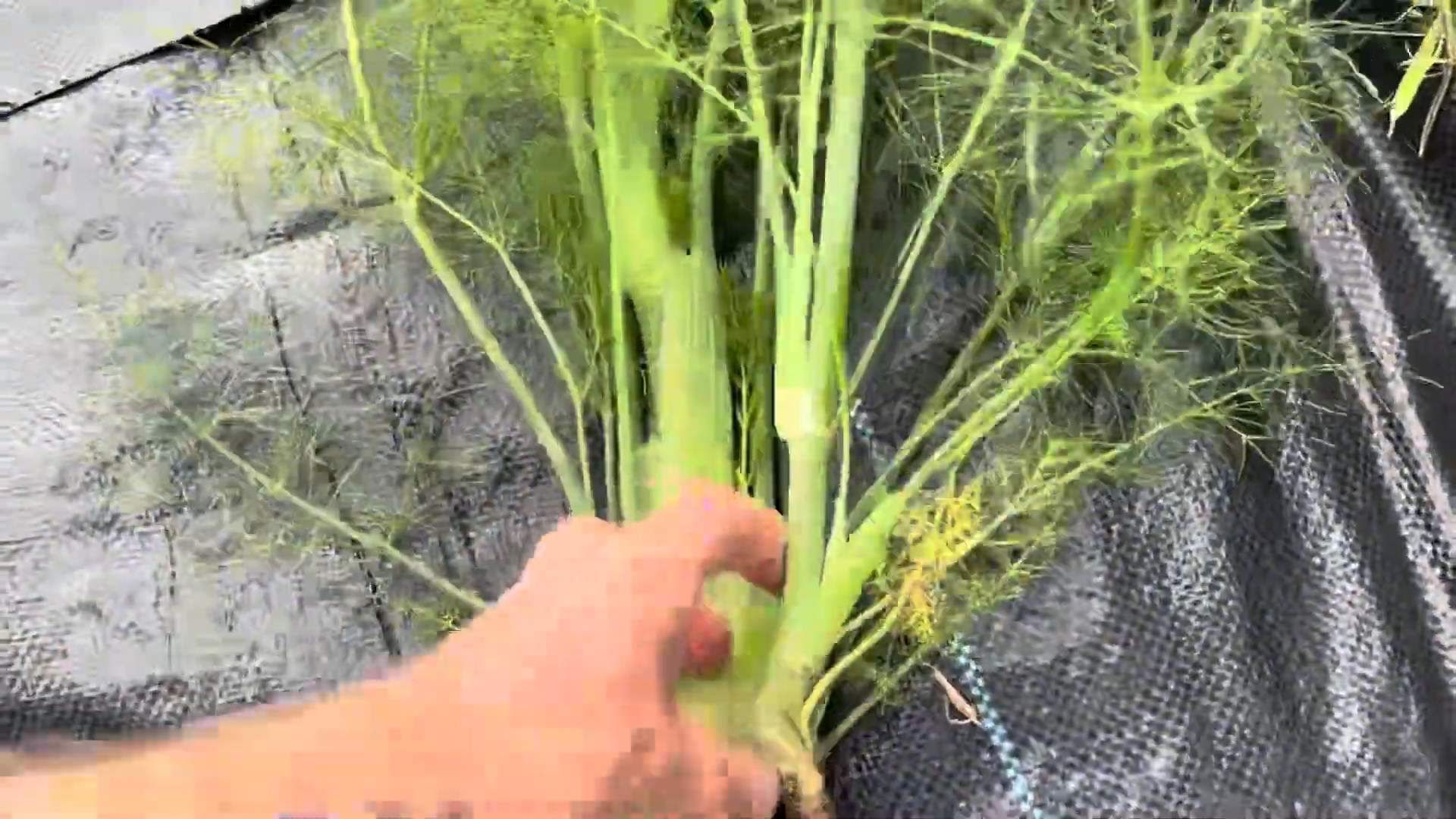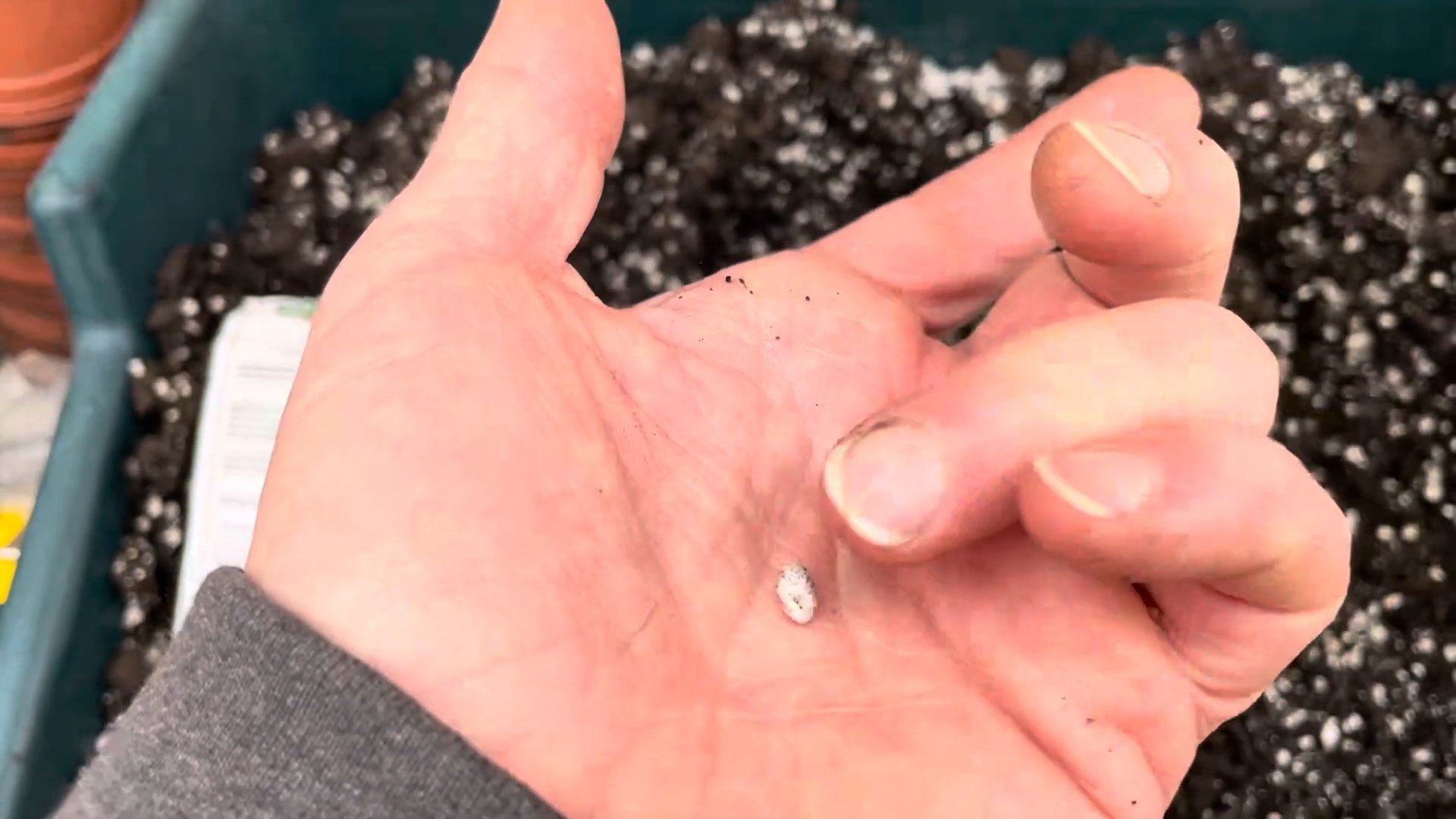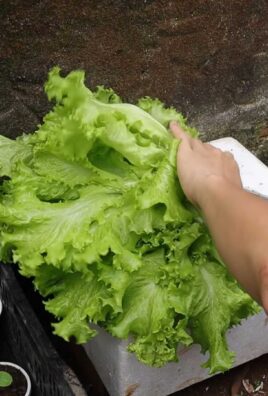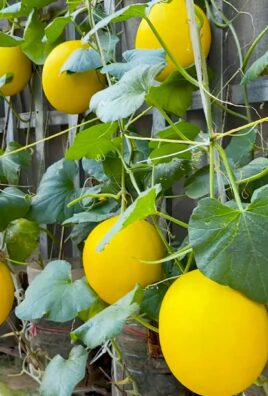Growing Fennel at Home might seem intimidating, but trust me, it’s easier than you think! Imagine stepping outside your back door and snipping fresh, fragrant fennel fronds to add a burst of anise-like flavor to your salads, soups, or even grilled fish. Sounds dreamy, right? Well, it can be your reality!
Fennel has a rich history, dating back to ancient Roman times when it was believed to promote longevity and courage. Gladiators even consumed it before battles! Today, while we might not be facing gladiatorial combat, we’re often battling busy schedules and the desire for fresh, healthy ingredients. That’s where growing your own fennel comes in.
Let’s face it, store-bought fennel can sometimes be lackluster and expensive. But with a few simple tricks and DIY hacks, you can cultivate your own thriving fennel patch, bursting with flavor and freshness. I’m going to show you how to easily start growing fennel at home, even if you have limited space or a less-than-green thumb. Get ready to unlock the secrets to a bountiful harvest and elevate your culinary creations with this versatile herb!

Growing Fennel at Home: A Beginner’s Guide
Hey there, fellow gardening enthusiasts! I’m so excited to share my experience with growing fennel at home. It’s surprisingly easy, and the rewards – fresh, flavorful bulbs and feathery fronds – are totally worth it. Whether you’re a seasoned gardener or just starting out, this guide will walk you through everything you need to know to successfully grow fennel in your own backyard or even in containers.
Understanding Fennel: A Quick Overview
Before we dive into the nitty-gritty, let’s talk a little about fennel. There are two main types: bulb fennel (also called Florence fennel) and herb fennel. We’ll be focusing on bulb fennel in this guide, as it’s the one most people are familiar with and want to grow for its edible bulb. Herb fennel is grown primarily for its seeds and foliage.
Bulb fennel has a mild anise-like flavor that’s delicious raw in salads, grilled, roasted, or braised. The feathery fronds can be used as a garnish or added to soups and stews. Plus, it’s a beautiful plant with its tall stalks and delicate foliage, adding a touch of elegance to any garden.
Choosing the Right Variety
Selecting the right variety is crucial for success. Here are a few popular bulb fennel varieties that I’ve had good luck with:
* ‘Florence’: A classic variety known for its reliable bulb formation and good flavor.
* ‘Zefa Fino’: A fast-maturing variety that’s great for shorter growing seasons.
* ‘Rondo’: A round, compact variety that’s perfect for container gardening.
When choosing your seeds, make sure to buy them from a reputable source to ensure good germination rates.
Getting Started: Planting Fennel
Fennel can be grown from seed or transplants. I prefer starting from seed, as it gives the plants a stronger root system.
When to Plant
The timing of planting depends on your climate. Fennel is a cool-season crop, so it’s best to plant it in early spring or late summer for a fall harvest.
* Spring Planting: Start seeds indoors 6-8 weeks before the last expected frost. Transplant seedlings outdoors after the danger of frost has passed.
* Fall Planting: Direct sow seeds in the garden 2-3 months before the first expected frost.
Where to Plant
Fennel needs at least 6-8 hours of sunlight per day. Choose a location with well-drained soil. Avoid planting fennel near dill, as they can cross-pollinate and affect the flavor of both plants.
Preparing the Soil
Fennel prefers rich, well-drained soil with a pH of 6.0-7.0. Before planting, amend the soil with compost or well-rotted manure to improve its fertility and drainage.
Sowing Seeds
1. Indoor Sowing: Fill seed trays or small pots with seed-starting mix. Sow seeds ¼ inch deep and keep the soil moist. Germination usually takes 7-14 days.
2. Direct Sowing: Sow seeds ½ inch deep and 2-3 inches apart in rows. Thin seedlings to 6-8 inches apart once they are a few inches tall.
Transplanting Seedlings
If you started your seeds indoors, you’ll need to transplant them outdoors once they’re large enough to handle and the weather is warm enough.
1. Harden Off Seedlings: Before transplanting, gradually acclimate the seedlings to outdoor conditions by placing them outside for a few hours each day, increasing the time each day for a week.
2. Transplant Seedlings: Dig holes that are slightly larger than the root balls of the seedlings. Gently remove the seedlings from their containers and place them in the holes. Backfill with soil and water thoroughly. Space the seedlings 6-8 inches apart.
Caring for Your Fennel Plants
Once your fennel plants are established, they’re relatively easy to care for.
Watering
Fennel needs consistent moisture, especially during hot, dry weather. Water deeply whenever the top inch of soil feels dry. Avoid overwatering, as this can lead to root rot.
Fertilizing
Fennel is a heavy feeder, so it benefits from regular fertilization. Apply a balanced fertilizer every 2-3 weeks during the growing season. You can also side-dress the plants with compost or well-rotted manure.
Weeding
Keep the area around your fennel plants free of weeds. Weeds compete with fennel for nutrients and water. Hand-pull weeds regularly or use a hoe to cultivate the soil.
Blanching (Optional)
Blanching the bulbs can make them sweeter and more tender. To blanch, mound soil around the base of the bulbs when they are about halfway to their mature size. This will block sunlight from reaching the bulbs, preventing them from turning green and bitter.
Dealing with Pests and Diseases
Fennel is generally pest-resistant, but it can be susceptible to a few problems.
* Aphids: These small, sap-sucking insects can infest fennel plants. Control aphids by spraying them with insecticidal soap or neem oil.
* Slugs and Snails: These pests can damage fennel leaves and bulbs. Control slugs and snails by hand-picking them off the plants or using slug bait.
* Root Rot: This fungal disease can occur in poorly drained soil. Prevent root rot by ensuring that your soil is well-drained and avoiding overwatering.
Harvesting Fennel
You can harvest fennel bulbs when they are about the size of a tennis ball.
1. Harvesting Bulbs: Use a sharp knife to cut the bulb at the base of the plant.
2. Harvesting Fronds: You can harvest the feathery fronds at any time. Simply snip them off with scissors.
3. Harvesting Seeds: If you want to harvest fennel seeds, allow the flower heads to dry on the plant. Once they are dry, cut them off and place them in a paper bag. Shake the bag to release the seeds.
Using Your Harvest
Now for the best part – enjoying your homegrown fennel!
* Raw: Slice the bulb thinly and add it to salads. The fronds can be used as a garnish.
* Grilled: Cut the bulb into wedges and grill them until tender.
* Understanding Fennel: A Quick Overview
Before we dive into the nitty-gritty, let’s talk a little about fennel. There are two main types: bulb fennel (also called Florence fennel) and herb fennel. We’ll be focusing on bulb fennel in this guide, as it’s the one most people are familiar with and want to grow for its edible bulb. Herb fennel is grown primarily for its seeds and foliage.
Bulb fennel has a mild anise-like flavor that’s delicious raw in salads, grilled, roasted, or braised. The feathery fronds can be used as a garnish or added to soups and stews. Plus, it’s a beautiful plant with its tall stalks and delicate foliage, adding a touch of elegance to any garden.
Choosing the Right Variety
Selecting the right variety is crucial for success. Here are a few popular bulb fennel varieties that I’ve had good luck with:
* ‘Florence’: A classic variety known for its reliable bulb formation and good flavor.
* ‘Zefa Fino’: A fast-maturing variety that’s great for shorter growing seasons.
* ‘Rondo’: A round, compact variety that’s perfect for container gardening.
When choosing your seeds, make sure to buy them from a reputable source to ensure good germination rates.
Getting Started: Planting Fennel
Fennel can be grown from seed or transplants. I prefer starting from seed, as it gives the plants a stronger root system.
When to Plant
The timing of planting depends on your climate. Fennel is a cool-season crop, so it’s best to plant it in early spring or late summer for a fall harvest.
* Spring Planting: Start seeds indoors 6-8 weeks before the last expected frost. Transplant seedlings outdoors after the danger of frost has passed.
* Fall Planting: Direct sow seeds in the garden 2-3 months before the first expected frost.
Where to Plant
Fennel needs at least 6-8 hours of sunlight per day. Choose a location with well-drained soil. Avoid planting fennel near dill, as they can cross-pollinate and affect the flavor of both plants.
Preparing the Soil
Fennel prefers rich, well-drained soil with a pH of 6.0-7.0. Before planting, amend the soil with compost or well-rotted manure to improve its fertility and drainage.
Sowing Seeds
1. Indoor Sowing: Fill seed trays or small pots with seed-starting mix. Sow seeds ¼ inch deep and keep the soil moist. Germination usually takes 7-14 days.
2. Direct Sowing: Sow seeds ½ inch deep and 2-3 inches apart in rows. Thin seedlings to 6-8 inches apart once they are a few inches tall.
Transplanting Seedlings
If you started your seeds indoors, you’ll need to transplant them outdoors once they’re large enough to handle and the weather is warm enough.
1. Harden Off Seedlings: Before transplanting, gradually acclimate the seedlings to outdoor conditions by placing them outside for a few hours each day, increasing the time each day for a week.
2. Transplant Seedlings: Dig holes that are slightly larger than the root balls of the seedlings. Gently remove the seedlings from their containers and place them in the holes. Backfill with soil and water thoroughly. Space the seedlings 6-8 inches apart.
Caring for Your Fennel Plants
Once your fennel plants are established, they’re relatively easy to care for.
Watering
Fennel needs consistent moisture, especially during hot, dry weather. Water deeply whenever the top inch of soil feels dry. Avoid overwatering, as this can lead to root rot.
Fertilizing
Fennel is a heavy feeder, so it benefits from regular fertilization. Apply a balanced fertilizer every 2-3 weeks during the growing season. You can also side-dress the plants with compost or well-rotted manure.
Weeding
Keep the area around your fennel plants free of weeds. Weeds compete with fennel for nutrients and water. Hand-pull weeds regularly or use a hoe to cultivate the soil.
Blanching (Optional)
Blanching the bulbs can make them sweeter and more tender. To blanch, mound soil around the base of the bulbs when they are about halfway to their mature size. This will block sunlight from reaching the bulbs, preventing them from turning green and bitter.
Dealing with Pests and Diseases
Fennel is generally pest-resistant, but it can be susceptible to a few problems.
* Aphids: These small, sap-sucking insects can infest fennel plants. Control aphids by spraying them with insecticidal soap or neem oil.
* Slugs and Snails: These pests can damage fennel leaves and bulbs. Control slugs and snails by hand-picking them off the plants or using slug bait.
* Root Rot: This fungal disease can occur in poorly drained soil. Prevent root rot by ensuring that your soil is well-drained and avoiding overwatering.
Harvesting Fennel
You can harvest fennel bulbs when they are about the size of a tennis ball.
1. Harvesting Bulbs: Use a sharp knife to cut the bulb at the base of the plant.
2. Harvesting Fronds: You can harvest the feathery fronds at any time. Simply snip them off with scissors.
3. Harvesting Seeds: If you want to harvest fennel seeds, allow the flower heads to dry on the plant. Once they are dry, cut them off and place them in a paper bag. Shake the bag to release the seeds.
Using Your Harvest
Now for the best part – enjoying your homegrown fennel!
* Raw: Slice the bulb thinly and add it to salads. The fronds can be used as a garnish.
* Grilled: Cut the bulb into wedges and grill them until tender.
* Roasted: Toss the bulb with olive oil, salt, and pepper and roast it in the oven until tender.
* Braised: Braise the bulb in broth or wine until tender.
* Soups and Stews: Add the bulb or fronds to soups and stews for a hint of anise flavor.
Troubleshooting
Even with the best care, you might encounter some challenges when growing fennel. Here are a few common problems and how to fix them:
* Bolting (Premature Flowering): Fennel can bolt if it’s exposed to hot weather or stress. To prevent bolting, plant fennel in early spring or late summer and provide consistent moisture.
* Small Bulbs: Small bulbs can be caused by poor soil, lack of sunlight, or overcrowding. Amend the soil with compost, ensure that your plants get enough sunlight, and thin seedlings to 6-8 inches apart.
* Bitter Flavor: Bitter flavor can be caused by bolting or blanching. To prevent bitter flavor, plant fennel in early spring or late summer, provide consistent moisture, and blanch the bulbs if desired.
Container Gardening with Fennel
Don’t have a garden? No problem! Fennel can also be grown in containers.
1. Choose a Large Container: Select a container that is at least 12 inches in diameter and 12 inches deep.
2. Use Well-Draining Potting Mix: Fill the container with a high-quality potting mix that drains well.
3. Plant One Plant Per Container: Plant one fennel plant per container.
4. Water Regularly: Water the container whenever the top inch of soil feels dry.
5. Fertilize Regularly: Fertilize the plant every 2-3 weeks during the growing season.
6. Provide Sunlight: Place the container in a location that receives at least 6-8 hours of sunlight per day.
Saving Fennel Seeds
If you want to save fennel seeds for next year, here’s how:
1. Allow Flower Heads to Dry: Allow the flower heads to dry completely on the plant.
2. Cut Off Flower Heads: Cut off the flower heads and place them in a paper bag.
3. Shake the Bag: Shake the bag to release the seeds.
4. Clean the Seeds: Remove any debris from the seeds.
5. Store the Seeds: Store the seeds in an airtight container in a cool, dry place.
Growing fennel at home is a rewarding experience that allows you to enjoy fresh, flavorful bulbs

Conclusion
So, there you have it! Growing fennel at home, while it might seem intimidating at first, is a surprisingly rewarding and accessible endeavor. We’ve walked you through the entire process, from selecting the right variety to harvesting your fragrant bounty. But why should you bother with this DIY project when you can simply buy fennel at the grocery store? The answer lies in the unparalleled freshness and flavor you’ll experience with homegrown fennel. Store-bought fennel often lacks the vibrant anise notes and crisp texture that make this vegetable so special. When you grow it yourself, you control the entire process, ensuring that your fennel is harvested at its peak ripeness and bursting with flavor.
Beyond the superior taste, growing your own fennel offers a connection to nature and a sense of accomplishment that’s hard to replicate. There’s something deeply satisfying about nurturing a plant from seed to table, knowing that you’ve played an active role in providing fresh, healthy food for yourself and your family. Plus, it’s a fantastic way to reduce your carbon footprint and support sustainable practices.
But the benefits don’t stop there! Growing fennel at home also allows for experimentation and customization. Want to try a different variety? Go for it! Bronze fennel, with its striking foliage, adds a touch of drama to any garden. Florence fennel, with its bulbous base, is perfect for salads and braised dishes. And don’t forget about the seeds! Fennel seeds are a versatile spice that can be used in everything from sausages to breads.
Speaking of variations, consider companion planting your fennel with other herbs and vegetables. Dill, chamomile, and yarrow are all excellent companions that can attract beneficial insects and improve the overall health of your garden. Just be mindful of planting fennel near certain vegetables, such as tomatoes and beans, as it can inhibit their growth.
And if you’re feeling adventurous, why not try growing fennel in containers? This is a great option for those with limited space or who want to keep their fennel plants closer at hand. Just be sure to choose a large container with good drainage and provide your plants with plenty of sunlight.
Ultimately, the decision to grow fennel at home is a personal one. But we believe that the benefits – the superior flavor, the connection to nature, the opportunity for experimentation – far outweigh the challenges. So, we encourage you to take the plunge and give it a try. You might be surprised at how easy and rewarding it can be.
Don’t be afraid to experiment with different techniques and find what works best for you. Every garden is unique, and what works for one person may not work for another. The key is to be patient, observant, and willing to learn from your mistakes.
And most importantly, don’t forget to share your experiences with us! We’d love to hear about your successes, your challenges, and any tips or tricks you’ve discovered along the way. Share your photos and stories on social media using #HomegrownFennel or leave a comment below. Let’s build a community of passionate gardeners who are dedicated to growing their own fresh, flavorful fennel.
So, grab your seeds, get your hands dirty, and start growing your own fennel today! You won’t regret it.
FAQ
What are the best varieties of fennel to grow at home?
There are two main types of fennel: herb fennel (also known as common fennel) and Florence fennel (also known as bulb fennel). Herb fennel is grown for its leaves and seeds, while Florence fennel is grown for its bulbous base. Some popular varieties of herb fennel include ‘Sweet Fennel’ and ‘Bronze Fennel’. For Florence fennel, consider ‘Romanesco’, ‘Zefa Fino’, or ‘Perfection’. The best variety for you will depend on your personal preferences and growing conditions.
How much sunlight does fennel need?
Fennel thrives in full sun, which means it needs at least 6-8 hours of direct sunlight per day. If you’re growing fennel indoors, make sure to place it near a sunny window or provide supplemental lighting. Insufficient sunlight can lead to leggy growth and reduced flavor.
What kind of soil is best for growing fennel?
Fennel prefers well-drained soil that is rich in organic matter. Amend your soil with compost or other organic materials before planting to improve its fertility and drainage. A slightly acidic to neutral soil pH (6.0-7.0) is ideal.
How often should I water my fennel plants?
Water your fennel plants regularly, especially during dry periods. Aim to keep the soil consistently moist but not waterlogged. Overwatering can lead to root rot, so be sure to provide good drainage. A good rule of thumb is to water deeply when the top inch of soil feels dry to the touch.
When is the best time to plant fennel?
The best time to plant fennel depends on your climate. In warmer climates, you can plant fennel in the spring or fall. In colder climates, it’s best to start seeds indoors 6-8 weeks before the last frost and transplant them outdoors after the danger of frost has passed.
How do I harvest fennel?
For herb fennel, you can harvest the leaves as needed throughout the growing season. Simply snip off the leaves with scissors or pruning shears. For Florence fennel, harvest the bulbs when they reach a desired size, typically around 3-4 inches in diameter. To harvest the bulb, loosen the soil around the plant and gently pull it up. Fennel seeds can be harvested when they turn brown and dry. Cut the seed heads off the plant and place them in a paper bag to dry completely.
Can I grow fennel in containers?
Yes, fennel can be grown in containers. Choose a large container with good drainage and fill it with a well-draining potting mix. Be sure to provide your plants with plenty of sunlight and water regularly. Container-grown fennel may require more frequent fertilization than plants grown in the ground.
What are some common pests and diseases that affect fennel?
Fennel is generally resistant to pests and diseases, but it can be susceptible to aphids, slugs, and snails. To control these pests, you can use insecticidal soap, diatomaceous earth, or handpick them off the plants. Root rot can also be a problem if the soil is poorly drained.
Is fennel a perennial or an annual?
Fennel is technically a short-lived perennial in warmer climates (zones 4-9), meaning it can live for more than two years. However, it is often grown as an annual, especially in colder climates where it may not survive the winter.
How can I prevent fennel from bolting (going to seed prematurely)?
Bolting can be caused by stress, such as heat, drought, or poor soil. To prevent bolting, provide your fennel plants with consistent moisture, adequate sunlight, and fertile soil. You can also try planting bolt-resistant varieties.
Can I eat all parts of the fennel plant?
Yes, all parts of the fennel plant are edible, including the bulb, stalks, leaves, and seeds. The bulb is often eaten raw in salads or cooked in various dishes. The stalks can be used in soups and stews. The leaves can be used as a garnish or added to salads. The seeds are used as a spice.
How do I store fennel?
Store fennel bulbs in the refrigerator for up to a week. Wrap them in a damp paper towel and place them in a plastic bag. Fennel leaves can be stored in the refrigerator for a few days. Fennel seeds should be stored in an airtight container in a cool, dark place.
What are some good companion plants for fennel?
Good companion plants for fennel include dill, chamomile, and yarrow. These plants can attract beneficial insects and improve the overall health of your garden. Avoid planting fennel near tomatoes, beans, and kohlrabi, as it can inhibit their growth.
Is growing fennel at home worth the effort?
Absolutely! The fresh, anise-like flavor of homegrown fennel is far superior to store-bought fennel. Plus, growing your own fennel is a rewarding and sustainable way to add fresh, healthy food to your diet. Give it a try and experience the difference for yourself!





Leave a Comment